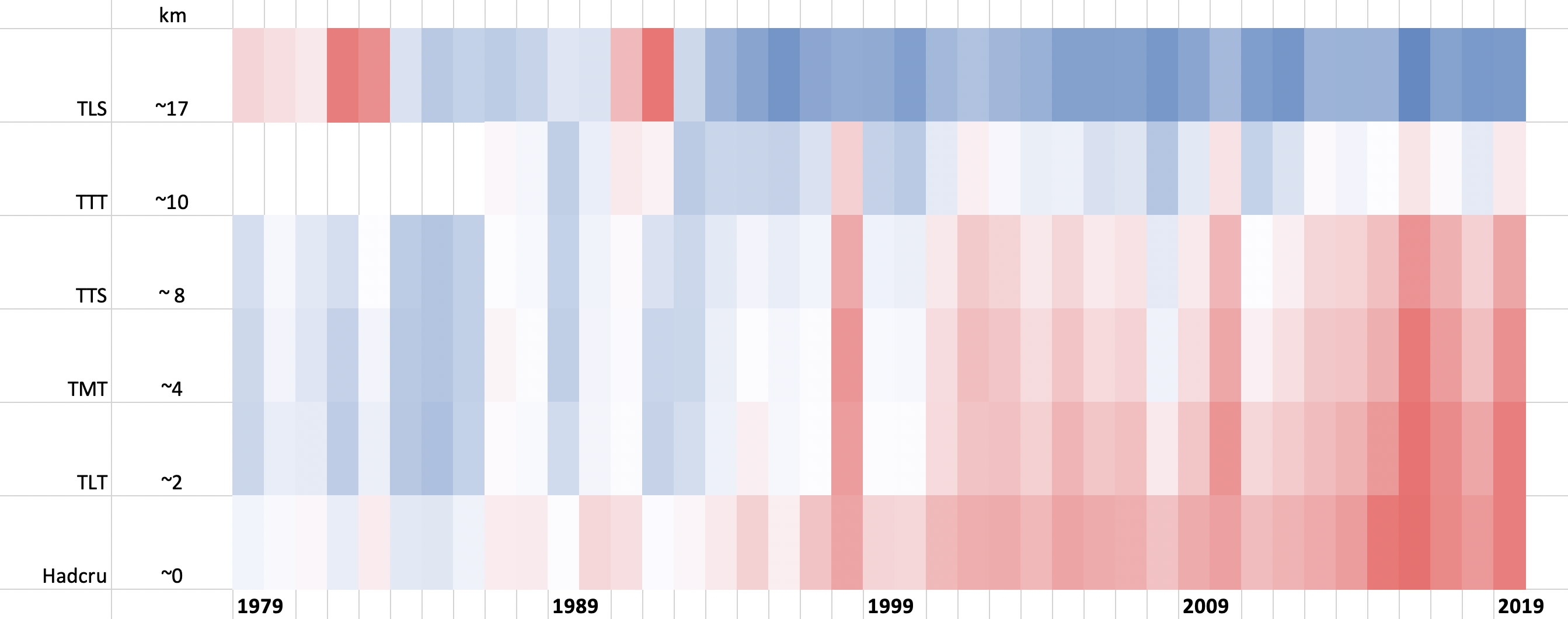
The lower layers of the atmosphere, known as troposphere, is warming; while the upper layers, known as the stratosphere, is cooling. This is a clear fingerprint of the enhanced greenhouse effect from human emissions of carbon dioxide owing to burning fossil fuels.

Changes in global atmospheric temperature at different levels in the atmosphere from 1979 to 2019: surface, TLT (2 km), TMT (4 km), TTS (8 km), TTT (10 km), TLS (17 km). Data from Cowtan & Way (Hadcru), and RSSv4. The colour scale goes from -0.75K to +0.75K, relative to the average of 1981-2010 for each layer separately.
The simple explanation is that some of the infrared radiation emitted by the surface of the earth, which would have normally reached the upper atmosphere, is absorbed by greenhouse gases in the lower atmosphere, so it warms. The upper atmosphere therefore receives less energy than before, and so cools. The very warm years (intense reds) in the upper atmosphere are the 1982-83 El Chichón and 1991-92 Pinatubo volcano eruptions, respectively. Note that for surface temperatures we are using globally “in situ” records (mostly from meteorological station) while the upper level temperatures are estimated from satellite infrared sensors.
Note that for the surface temperature we are using global “in situ” records (mainly from weather stations) while higher level temperatures are estimated from infrared satellite sensors.